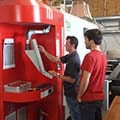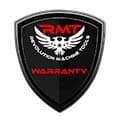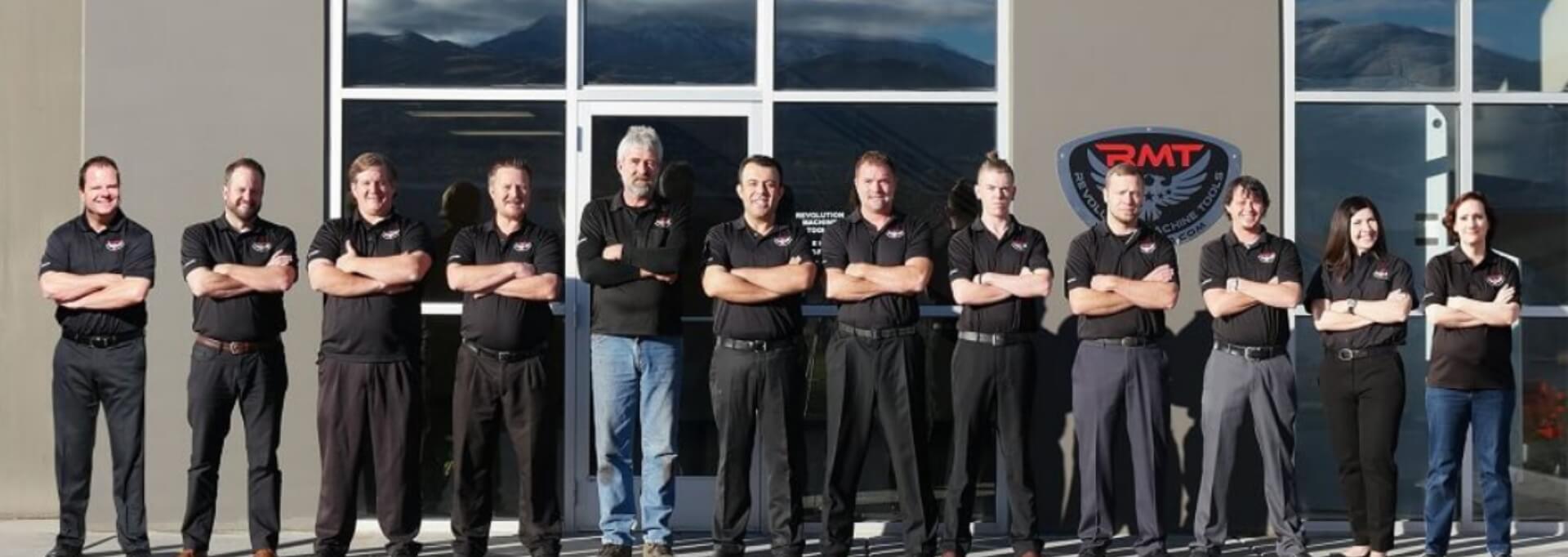What Is the Role of Finishing in Metalworking?
The art of finishing, a critical component of metalworking, encompasses several different techniques, including grinding, sanding, sandblasting, polishing, electroplating, painting, and powder coating. Finishing work significantly impacts the functionality, durability, and appearance of the final product in various ways:
- Improves Aesthetic Appeal. Finishing enhances the appearance of a metal surface by making it smoother, shinier, or more uniform, depending on the desired look. This is essential for products meant to be visually appealing, such as jewelry, decorative items, or consumer electronics.
- Enhances Durability. A good finish can protect metal surfaces from corrosion, oxidation, or wear by adding protective coatings, such as paint, anodizing, or plating. This is especially important for metals exposed to harsh environments or frequent use.
- Improves Mechanical Properties. Finishing can reduce surface roughness, which minimizes stress concentrations and improves the fatigue resistance of the material. This is critical in components subject to cyclic loading or high stress.
- Facilitates Maintenance and Cleaning. Smooth, well-finished surfaces are easier to clean and maintain because they are less likely to trap dirt, debris, or moisture, which can lead to deterioration over time.
- Ensures Precision and Functionality. In applications requiring tight tolerances, such as in machinery or tools, finishing is necessary to achieve the exact dimensions and surface quality needed for proper function.
- Safety. Removing sharp edges, burrs, or rough spots through finishing reduces the risk of injury during handling and use.
- Prepares for Subsequent Processes. Certain finishing processes, like polishing or grinding, prepare metal surfaces for additional treatments, such as coating or bonding, ensuring better adhesion and performance.
RMT’s Partnership with Jonsen Sander
Revolution Machine Tools has partnered with Jonsen Sander, a manufacturer of finishing equipment for use in metal fabrication, to supply their machines to RMT’s customers. With over 100 patents, including over 30 invention patents, Jonsen Sander has proven themselves a leader in the metal finishing industry. Their lineup of equipment includes machines for surface finishing, deburring, edge rounding, de-slagging, precise grinding, and stock removal.
RMT currently offers the following Jonsen Sander finishing machines:
- Jonsen SGB1000 Deburring and Edge Rounding Machine. DRY OPERATION. Ideal for cleaning up parts following laser cutting, the SGB1000 has a maximum working width of 39.3” (1000mm).
- Jonsen SGP800 Deburring, Edge Rounding, and Surface Finishing Machine. DRY OPERATION. The highly efficient yet cost-effective SGP800 features a wide abrasive belt head that is capable of sanding down and removing bigger burrs on parts as well as whole surface finishing. It also includes a planetary abrasive barrel station with four abrasive barrels to further round edges and contours (two that rotate clockwise and two counterclockwise). It has a maximum working width of 31.5” (800mm).
- Jonsen SDGB1000 De-slagging and Edge Rounding Machine. DRY OPERATION. With a maximum working width of 39.3” (1000mm), the SDGB1000 is designed for efficient de-slagging and edge rounding of medium to thick metal parts following oxy-fuel, plasma, or high-power laser cutting processes. The three-station machine has a patterned hammer type de-slagging disk for knocking out the heavy slags at the first station, an abrasive belt head for sanding leftover molten slags at the second station, and an abrasive flap/nylon cross belt for final edge rounding and surface smoothing at the final station. Also available is the Jonsen SDDB1000, which is the same as the SDGB1000 except it has a second patterned hammer type de-slagging disk at the second station instead of an abrasive belt head.
- Jonsen SGP1000 Deburring, Edge Rounding, and Finishing Machine. DRY OPERATION. A very versatile piece of equipment, the SGP1000 is suitable for finishing parts with small to medium burrs and sharp edges following laser cutting, punching, shearing, and similar processes. It has a maximum working width of 39.3” (1000mm).
- Jonsen SG630-JS Wide Abrasive Belt Sanding Machine. DRY OPERATION. One of Jonsen’s earliest and most popular machines, the SG630-JS has a belt width of 25” (630mm) for a maximum working width of 23.6”. This entry level sander is perfect for all aspects of surface finishing, including the removal of oxide layers and deep scratches.
- Jonsen SG630-WJS Wide Abrasive Belt Sanding Machine. WET OPERATION. An entry level machine, the SG630-WJS is suitable for processing materials like stainless steel, titanium, zirconium, aluminum alloys, and magnesium alloys. It is equipped with an automatic filtration unit for recycling the cutting fluid and has a belt width of 25” (630mm) for a maximum working width of 23.6”. The cooling effect from the wet operation mitigates deformation of the workpiece during the operation, resulting in a higher quality surface.
- Jonsen SG1030-JS+D Surface Sanding, Finishing, Deburring, and Edge Rounding Machine. DRY OPERATION. A double workstation machine, the SG1030-JS+D sports a wide abrasive belt head and a zigzag disk brush station. It allows a maximum working width of 39.3” with an available upgrade to 50”.
- Jonsen SG1030-WJS+DB Surface Sanding, Finishing, Deburring, and Edge Rounding Machine. WET OPERATION. It can efficiently clean and smoothen sharp edges as well as significantly improve surface texture. The machine has a maximum working width of 39.3”, with an available upgrade to 50”.
- Jonsen SD-H Deburring and Edge Rounding Machine. DRY OPERATION. With a flexible swing arm and a vacuum working table, the SD-H offers more consistent performance and greater efficiency than traditional handheld angle grinders or orbital sanders for small batch parts finishing. With a 360° swing arm span of 59”, the SD-H has a maximum part dimension of 59” x 59” within the arm span and 39.4” x 31.5” across the worktable.
- Jonsen SG2500-2 Double Abrasive Belt Stroke Sander. DRY OPERATION. The perfect machine to replace manual sanding operations in a shop, the SG2500-2 is widely used for surface finishing, polishing, and weld bead sanding of formed parts such as boxes and cabinets. It has a maximum working width of 59” and a maximum working length of 98.4” (2500mm).
- Jonsen SD300-JS+D Deburring, Edge Rounding, and Finishing Machine. DRY OPERATION. The optimal choice for finishing small flat punched, fine blanked, and precision machined parts, the SD300-JS+D is extensively used for processing automotive and precision machined parts. It has a maximum working width of 11.8” (300mm).
- Jonsen SD300-WJS+3D Deburring and Edge Rounding Machine. WET OPERATION. Designed to work with fine blanking, punching, and flat precision-machined parts. It has a maximum working width of 11.8” (300mm) and is highly efficient in processing high volume fine blanking parts coming directly from presses.
- Jonsen SG1950-4WJS Precision Grinding and Polishing Machine. WET OPERATION. This reciprocating gantry-type machine has four wide abrasive belt heads for maximum working widths of 39.4”, 51”, 63”, or 75”. The worktable is driven by linear guides and a ball screw drive for high precision processing of the workpiece, and the feeding rate is adjustable between 6.5-29.5 ft/min. Ideal for processing whole sheets or large scaled parts, the SG1950-4WJS performs precision grinding, surface sanding, and polishing on a variety of materials, including titanium, molybdenum, aluminum, stainless steel, and carbon steel.
- Jonsen SG1600-WL Precision Sanding, Grinding and Polishing Machine. WET OPERATION. A reciprocating gantry-type machine, the SG1600-WL’s worktable moves the workpiece back and forth under the wide abrasive belt head for processing in multiple passes to achieve the desired surface texture. It has a maximum working width of 63” (1600mm).
- Jonsen SG1650-WJS+B Whole Sheet Surface Sanding, Grinding, and Finishing Machine. WET OPERATION. Equipped with a 65” (1650mm) wide belt for a maximum working width of 62.2”, this model is widely used in finishing work of whole sheets or large scaled parts. The conveyor table of the SG1650-WJS+B can be configured for reciprocating movement, allowing it to process large and heavy parts in multiple passes.
- Jonsen SG1300-JS Surface Finishing Machine. WET OPERATION. Designed to be used as a part of a stainless-steel sheet or coil surface finishing line, the SG1300-JS is available with maximum working widths of 51”, 63”, and 83”. The wet operation creates a smoother, more delicate surface finish than a dry machine can produce. Also available is the Jonsen SG1300-2JS, an upgrade from the standard SG1300-JS that offers bottom sanding for dual side finishing.
Contact RMT today for more information and a competitive quote on the perfect metal finishing equipment for your applications, along with any other metal fabrication machines you might need. From the first bend to the final finish, Revolution Machine Tools is there to help you get the job done right.







